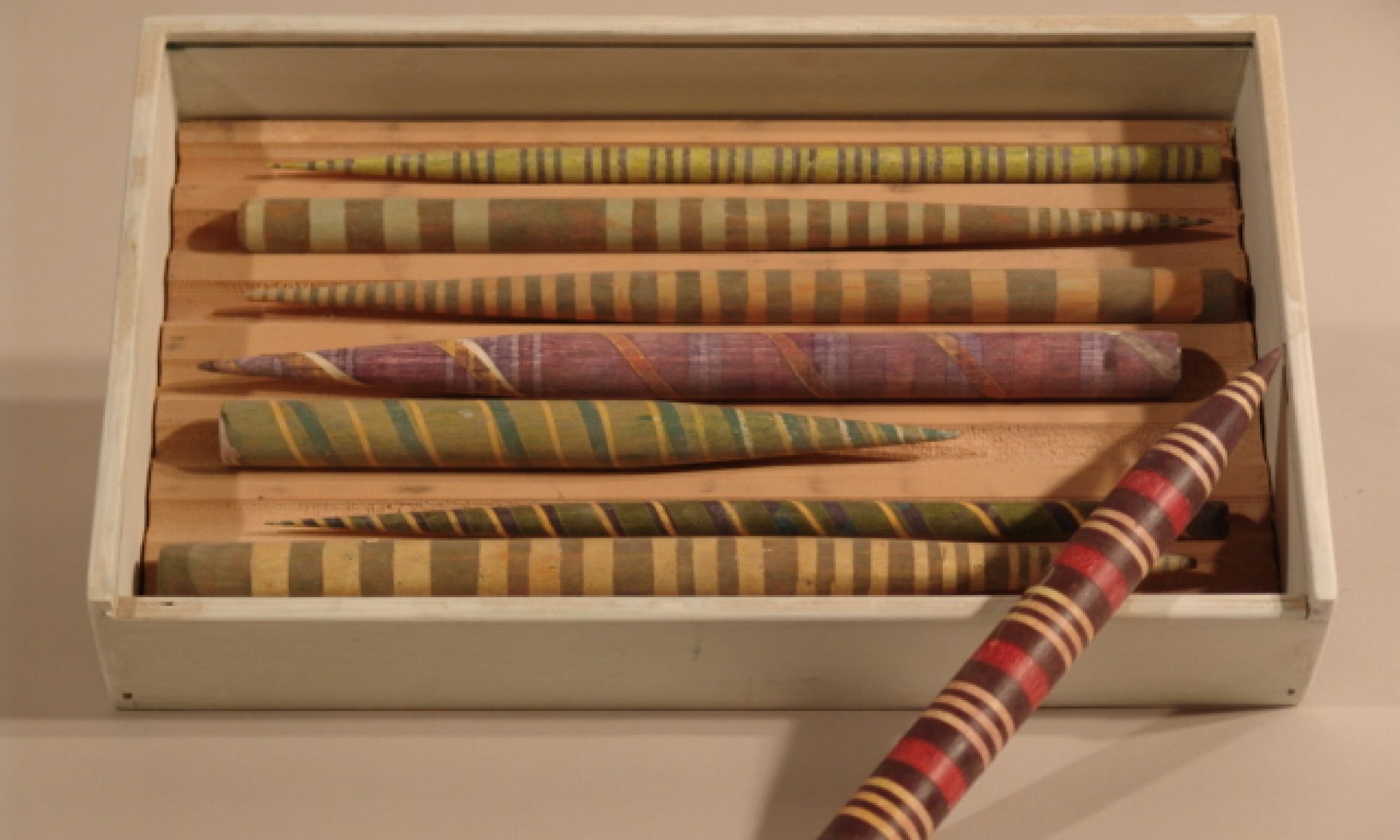As a skewed consideration of the rudimentary persistence-of-vision principle of animation: What becomes of the optical toy when it’s had its central illusory (visual) effects diminished by insufficient spin speed?
And as the device’s core phenomenological intention fully disappears into the background of “techno-aesthetic”, how might its conceptual meaning/value shift? ..how might the objective observer then manage to mentally map (imagine) the device’s smooth visual intermix of opposing sides?
Enhancing these visual conceptual/perceptual challenges are dimensional disparities between the platter’s alternate displays’ mise en scène translations; one view being essentially two-dimensional and the other bas-relief 3D.
Hmm-mm, …one can only wonder what “holographic” analog appears if/when actually spun up to the requisite 12Hz…
Materials: Wood, paper, acrylic, gouache, inkjet, metal antique toy car.
Dimensions (mainUnit): (Approx.) 14”h x 12.5”w x 12.5”d
Collection of Harry Yust & Lee Zehender



